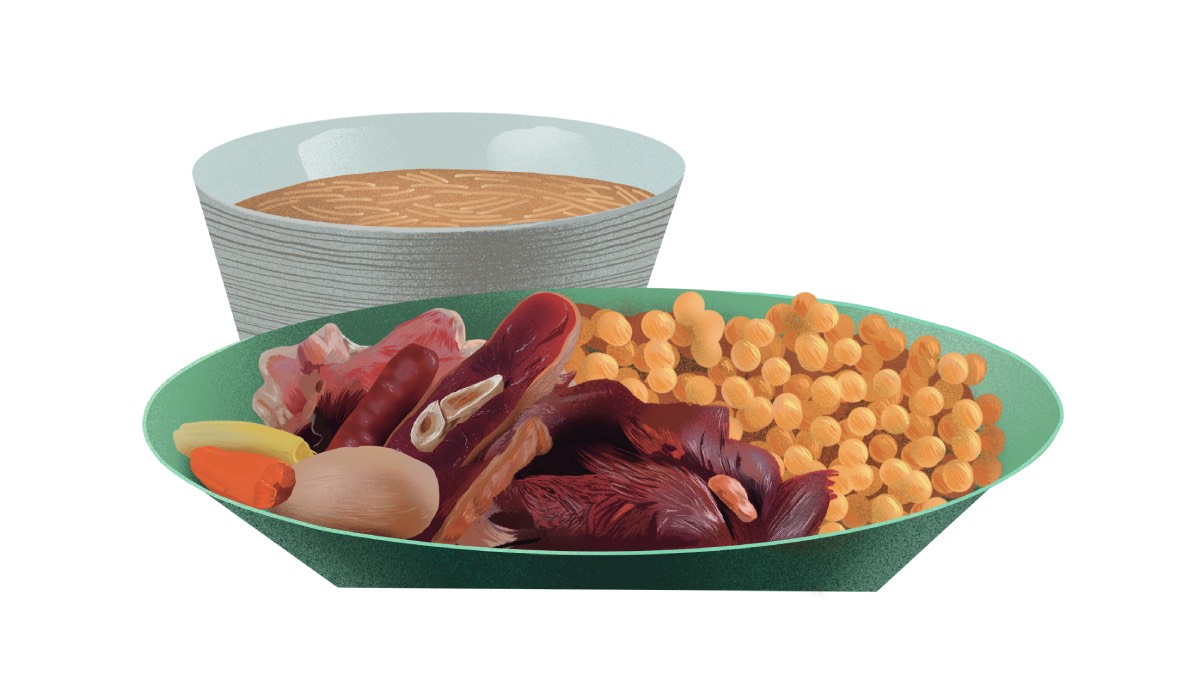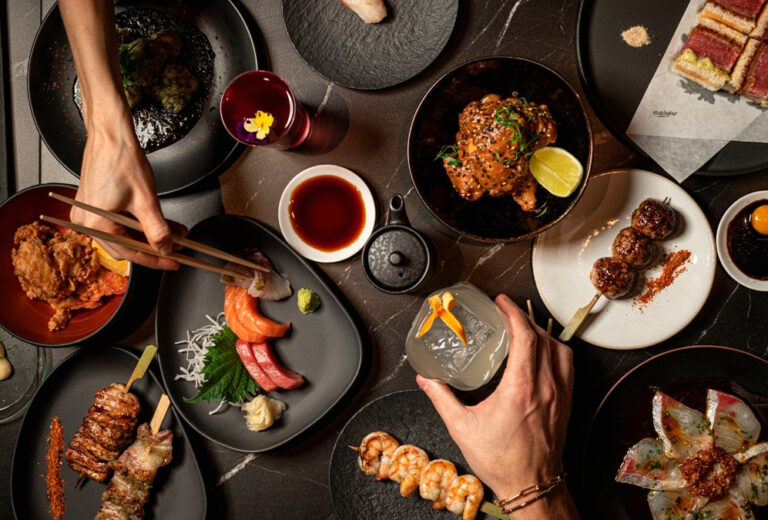Click here to read the Spanish version.
Three medieval dishes dispute the paternity of cocido madrileño: Sephardic adafina, Maghrebi couscous and Castilian olla podrida. In other words, the fascinating Spain of the Three Cultures is involved in cocido. Cocido is almost the only dish common to all the regional cuisines of Spain. According to Néstor Lujan and Juan Perucho, who give an account in their essential El Libro De La Cocina Española of its variants: Basque, Extremadura, Maragato, Montañés, olla gallega, pringá, sopa i bollit balear, escudella i carn d’olla catalana, l’olla de tres abocás valenciana (with artichokes!) and a long etcetera, as well as the most famous, el madrileño.
Of course, it is impossible to clarify the authorship of stews with a centuries-old history. Nor does one have to be very astute to see that it is not strictly speaking a national dish: for the journalist and gourmet Julio Camba, the only “national” part of the dish was the chickpeas, so reviled in France and in almost all European cuisines. There is pot au feu, a French version of cocido, without chickpeas, an ancestral dish of rural and humble origin like so many others throughout Europe, and all the regional variants of cocido made with local ingredients, such as the bollito misto in northern Italy. According to Camba, our cocido was nothing more than a local version of a universal dish, and the “idea of putting in a little of each thing separately, and making at the same time a soup dish, another of meat and another of vegetables, is such an elementary idea that surely all housewives with a large family and few resources have had it at the same time in different parts of the world”.
The fact that the Madrilenian stew is the most popular of all may be due to the excellence of the water from Madrid and the Castilian chickpea, the one from Fuentesaúco.
It seems obvious that cocido would come from olla podrida, a medieval stew with special roots in Castile, which takes its name from the vessel in which it was prepared: the olla podrida. The word ‘podrida’ must have referred to the slow cooking, to the point that what was inside (mutton, cow, hen, capon, sausage, pig’s foot and vegetables) fell apart, by analogy with overripe fruit. It is the pot that makes Sancho Panza salivate in Don Quixote.
The cook Francisco Martínez Motiño, head of the palace kitchens for three decades, in his Arte de cocina, pastelería, vizcochería y conservería (1611) gives us a recipe for this rotten pot that would include hen, cow, mutton, lean bacon, poultry, pork, sausages, hare and black pudding. In addition, jerky, beef and pork tongues, ears and sausages were to be cooked, and the broth from both was to be used to make vegetables (cabbage, turnips, parsley and mint).
Of course, the rampant poverty of Golden Age Spain made such a carnivorous feast unattainable, and this is where the reviled chickpea makes its appearance. In a play by Lope de Vega, the culminating incarnation of popular sentiment in that Spain of rogues and comedy corrals, there is an almost identical formula for the stew that incorporates chickpeas, a common element in almost all Spanish stews.
It is not unlikely that Motiño omitted chickpeas from his recipe because of their humble condition. It was a poor man’s food, and they carried a stigma inherited from the ancient Romans. The chickpea, which came to the Iberian peninsula by the Carthaginians, seemed to them a despicable legume, and they did not spare it in their literature: one of the funniest characters in the theatre of Plautus, the Latin comedian, is Pultagonides, literally, “chickpea eater”. Our Julio Camba said that they leave no more substance in the broth than a handful of pellets. Those who ate them were looked at “as we look today at fairs at the man who swallows live batrachians or at the man who puts burning teas into his oesophagus”. From the beginning, it was the food of humble people, as well as being traditional, judging by the contempt it inspired in the French and in almost all European peoples.
At the Lhardy it was served on delicate porcelain plates, with silver platters and cutlery.
The fact that Madrilenian stew is the most popular of all Spanish stews may be due to the excellence of the waters of Madrid and the Castilian chickpea, the Fuentesaúco chickpea. It is also due to its simplicity, which according to some malicious voices is due to Madrid’s laziness. It is also the synthesis of all, with the “spirit of equity, characteristic of the people of Madrid”, according to the writer and gastronome Dionisio Pérez Gutiérrez in his Guía del buen comer español (Guide to good Spanish food). A whole controversy broke out in the press between hygienists and chemists in the 19th century about “gabrieles”, as the Madrilenians called chickpeas. The doctor and journalist José Parada y Santín defended the virtues of chickpeas in the workers’ diet against the gastronome Ángel Muro Goiri, who despised them. In his defence, Parada used Justus von Liebig, the famous German chemist who defended this legume “a relative of the tamarind, the love tree, indigo and lentils”.
From the popular taverns, cocido made its way to opulent tables. The assimilation of cocido in the Spanish capital ran parallel to its acceptance by the bourgeoisie and the Court. From the tavern to the restaurant, cocido was refined, as in the case of Lhardy, where it was served on delicate porcelain plates, with silver platters and cutlery. Isabel II, the Castiza Queen, would go there to eat cocido, a dish that also delighted her grandson, Alfonso XIII, who imposed the tradition of serving it on Thursdays at the Ritz in two courses, or tumbos, according to the Alfonso XIII canon, with vegetables from Tudela and juicy pilotas. The ingredients became more expensive and it was no longer the humble dish of the past.
An emblem of Madrid until the Civil War, cocido was at its peak during the Romantic period. Modernity made it less popular, and the healthy religion viewed it with suspicion because of its calorie content. There are no longer any devoted housewives either, who, according to some moralists, thought that the fact that the stew was prepared on their own left them plenty of time for dangerous mischief. But on winter weekends it still comforts us with its sacred turnovers.
Illustration: Leonardo Berbesí.





